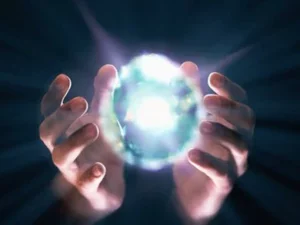In the October 2012 issue of the Active Consciousness Newsletter, I wrote about my growing fascination with Hawaiian mysticism — sometimes called Huna. My interest in the wisdom of Hawaii was triggered when I began reading the Spiritwalker trilogy of books by Hank Wesselman, who now teaches workshops on the subject. I can also highly recommend another introductory text by Charlotte Berney, Fundamentals of Hawaiian Mysticism.
There is one key aspect of these teachings that, so far, has been both new and profound for me: the concept of what Berney calls the Basic Self. The Huna teachings say that there are three distinct parts of our soul or being — the Basic Self, the Middle Self, and the High Self. The High Self generally corresponds to what I call, in Active Consciousness, the Inner Self. This is the wise part of ourselves that speaks to us from within and journeys with us from life to life. It is the part of us that many of us are trying to listen to and get in touch with through meditation and other consciousness practices.
The Middle Self corresponds roughly to the rational thinking mind. It is the part of us we normally identify with as “I” — the part that is always “talking” in our heads and reasons about things. It functions while we are awake and goes “unconscious” while we sleep. It assimilates data, makes decisions, and directs the body to execute them.
The Basic Self is different. Unlike the Middle Self, it is “the mind that never sleeps.” While it permeates the body and does control its functions — the musculature, the organs, the nervous system, as well as being the seat of emotions, memory, instinct, and survival — it is not simply the body; it is a much deeper and spiritual aspect of our self. Indeed, to view the Basic Self merely as the “body machine” can be a big mistake. It has an awareness and a mind of its own.
Hank Wesselman teaches that this Basic Self is composed of three parts — one inherited from our mother, another inherited from our father, and the third part bestowed upon us by the High Self when we are born. While the Middle Self is usually associated with the brain, the Basic Self is usually associated with the solar plexus and remains dominant in our makeup until we are about eight or nine years old. Then the Middle Self starts to take over.
While the Basic Self is generally subservient to the Middle Self by nature, it is still there, and if we ignore it, we set ourselves up for trouble — often in the form of physical or emotional ailments. When the Basic Self speaks, it is essentially our “gut” talking. For example, our “gut” may tell us that we don’t want to do something. If our Middle Self then coerces us to do it anyway, our Basic Self still remembers.
Today when I was at the pool, I witnessed something that reenacted a key moment in my childhood. A little five-year-old girl had been brought to the adult lap pool by her instructor and “urged” (more like coerced) against her will to do things that I’m sure the instructor thought were for her own good, but certainly were not in alignment with the little girl’s Basic Self. Although the girl was a skilled swimmer for her age, she still did not want to jump off a 3 foot starting block, swim width wise across the pool under each of the lane dividers, and then do another full 25 yard lap. The instructor nearly pushed the girl off the starting block when she balked, and when the girl cried about swimming across the pool, the instructor got in the pool to coerce her physically. The girl cried in protest the entire time. I nearly interfered in what was going on, but opted instead to send the girl love instead. I’m still not sure I did the right thing.
You see, something similar happened to me when I had my first swim lesson at age five. I could only dog paddle at that point. But the big burly instructor decided to take me to the top of a fifteen foot high jump and commanded me to jump off. When I cried and balked, he jumped in first and waited for me to follow. All alone up there, I felt that I had no choice but to jump in too. I’m sure he thought he was teaching me something (I don’t know what!), but I developed a fear of heights from that moment onward — something I only recently have begun to deal with. I only hope this little girl was not similarly affected.
So how should we deal with our Basic Self? Sometimes we just have to do things we really don’t want to do. Sometimes we simply must suppress our innate feelings or tendencies. We’d rather sit on the couch and eat cake, but our Middle Self’s job is to tell us: time to do homework, time to adhere to our diet, time to go to that meeting with someone we don’t like.
The answer is that it’s all about developing a relationship with the Basic Self. You must treat it with respect. You must negotiate with it. You must ask its permission. In the case of this little girl, instead of yelling and admonishing and physically coercing her, the instructor could have said: “I know you are afraid and I respect your feelings. But do you think you can work up the courage to just try this once? You might learn that this is actually fun.” The little girl would then have gone within and asked her Basic Self for permission to at least try.
In my own life, I have discovered that it can also be very useful to ask forgiveness from your Basic Self if you have spent most of your life ignoring it. The benefits can be numerous. For example, as you go through your day and various aches, pains, headaches, and irritations come up, you may discover that these sufferings are actually the result of violations of the Basic Self that you are not even aware of. Simply by getting in touch with what your Basic Self really feels and acknowledging it, your aches and pains may disappear.
We all have duties and routines we adhere to each day. Does your Basic Self agree with them? What does your Basic Self really want to do? What does this part of yourself really think about a certain person you are dealing with, or about some behavior that you have accepted as “required”? You might be surprised by the answers if you truly and honestly engage with this very real and important part of yourself. As Charlotte Berney writes, “Getting to know this powerful part of your makeup and being able to dialogue with it is crucial to the success of the Huna process.”
My recommendation is to begin by using the same meditative strategies I talk about in Active Consciousness. Then simply ask for contact with the Basic Self. For example, you might ask, “Basic Self, what do you want?” Or, “Basic Self, what do you think?” Then listen with respect, comply whenever possible, and negotiate when you cannot. Over time, you will begin to realize that the High and Basic Selves are always working together as a team to support you. They love you and are there to serve you — if you will only pay attention to them!





I blog frequently and I seriously thank you for your information.
The article has really peaked my interest. I will book mark your site and keep checking
for new details about once per week. I opted in for your Feed too.
Fantastic Post.appreciate your share… waiting for more.
I accepted the Huna philosophy a number of years ago along with my ongoing observations. Lately I’ve simplified my approach to the 3 C,s . Life is Contrast, Choice and Change. If we are only in a state of Now (there being no such thing as time and space) then our past moments are already history and the future moments only anticipation and expectation. Then, I think that our left brain is linear, likes lists, words and story (with beginning, middle and ends ie. mystery, what happens next?) Our right brain picks up experiences in shapes. These shapes connect to other energetic shapes without judgment. They connect faster than the speed of light or whatever the aha speed is. The work with similar sounds in some way as well. It doesn’t work with the alphabet but maybe sound vibrations figure in?
I enjoy noticing. Am grateful for what is presented and try to drop being the doer. It seems we are on the same page…fun.
I think we are just meant to experience joy in the now….like jazz scatting and the wonderment of it all. When I just can notice what the next step that shows up wants to be, it is usually better and more detailed than I could have consciously fashioned. Cheers!
[…] be found sometime in your past, usually before ages 8-10. That is the period of time in which the Basic Self (which I have written about extensively before) holds sway. The Basic Self might be viewed as your […]
[…] be found sometime in your past, usually before ages 8-10. That is the period of time in which the Basic Self (which I have written about extensively before) holds sway. The Basic Self might be viewed as your […]
[…] be found sometime in your past, usually before ages 8-10. That is the period of time in which the Basic Self (which I have written about extensively before) holds sway. The Basic Self might be viewed as your […]
[…] be found sometime in your past, usually before ages 8-10. That is the period of time in which the Basic Self (which I have written about extensively before) holds sway. The Basic Self might be viewed as your […]